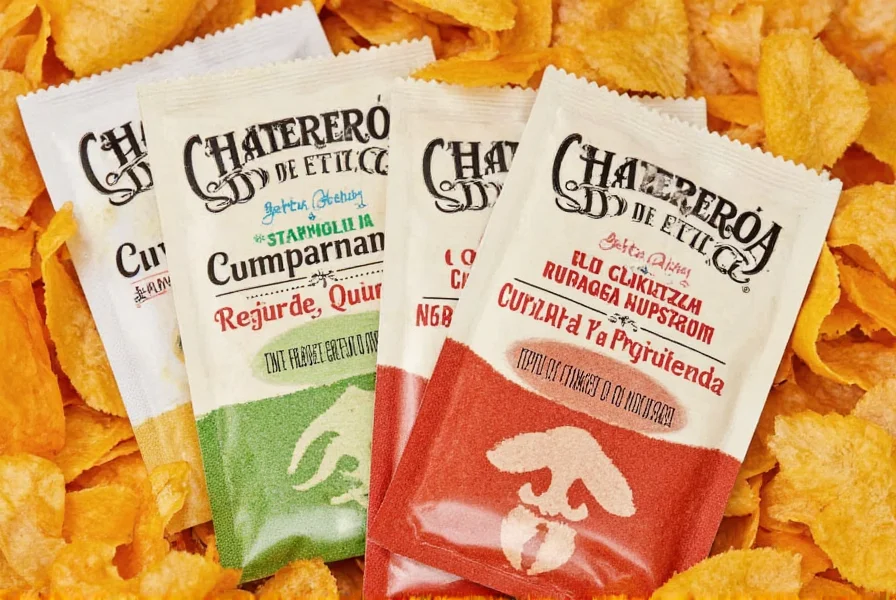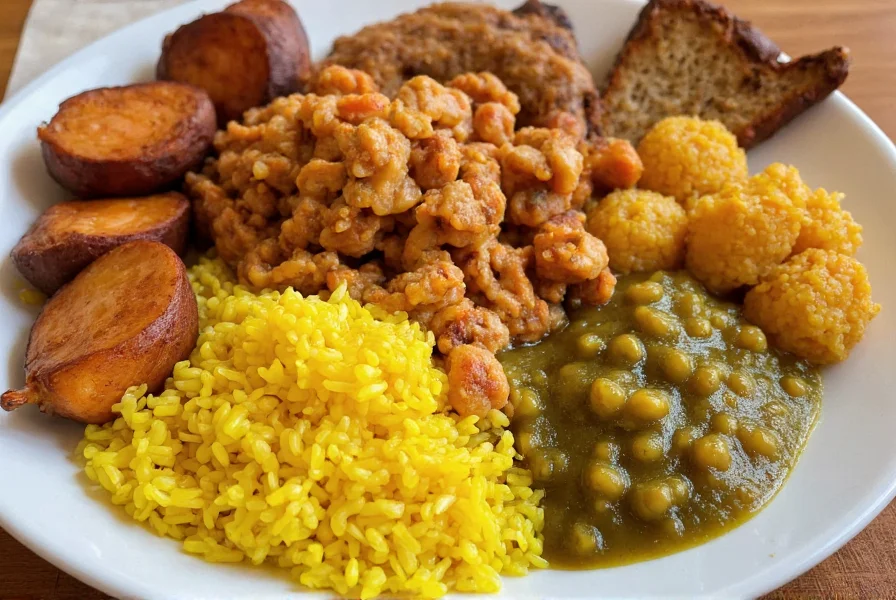Sazón seasoning has become a staple in kitchens throughout Latin America and beyond, transforming ordinary dishes into culinary delights with its signature yellow-orange hue and complex flavor profile. This versatile spice blend originated in Puerto Rico but has spread throughout Caribbean and Latin American communities, becoming particularly popular in the United States through brands like Goya.
History and Cultural Significance of Sazón
The story of sazón begins with the indigenous Taíno people of the Caribbean, who first used achiote (annatto) for both culinary and ceremonial purposes. When Spanish colonizers arrived, they introduced ingredients like cumin and garlic, which blended with local spices to create early versions of what we now know as sazón. African culinary traditions further influenced the blend through the transatlantic slave trade, adding depth to its flavor profile.
By the mid-20th century, commercial sazón seasoning emerged as food companies recognized the demand for convenient, pre-mixed seasoning packets that captured authentic Latin American flavors. Today, sazón represents more than just a seasoning—it's a cultural touchstone connecting generations of Latin American families to their culinary heritage.

Core Ingredients in Traditional Sazón
While recipes vary by region and brand, authentic sazón always features these essential components:
| Primary Ingredient | Flavor Contribution | Cultural Significance |
|---|---|---|
| Achiote (Annatto) | Earthy, slightly peppery with subtle nuttiness | Provides signature orange color; used by indigenous peoples for centuries |
| Cilantro | Fresh, citrusy notes | Essential herb in Latin American cooking; distinguishes sazón from similar blends |
| Cumin | Warm, earthy, slightly smoky | Introduced by Spanish colonizers; adds depth to the blend |
| Garlic | Pungent, savory backbone | Universal flavor enhancer across Latin American cuisines |
Many commercial sazón blends also include additional ingredients like oregano, black pepper, paprika, and monosodium glutamate (MSG). Some regional variations incorporate culantro (recao), which has a stronger flavor than cilantro, or achiote specifically for color enhancement without additional spices.
Popular Sazón Varieties and Brands
While homemade sazón exists, most consumers rely on commercially prepared versions. The most widely recognized brand in the United States is Goya Foods, which offers several sazón varieties:
- Sazón Regular - The classic blend with achiote, cilantro, cumin, and garlic
- Sazón Culantro y Pimienta - Features stronger culantro flavor with added black pepper
- Sazón Achiote - Focuses primarily on achiote for color with minimal additional spices
- Sazón Coriander and Oregano - Regional variation popular in certain Latin American countries
When examining sazón seasoning ingredients, note that some commercial blends contain MSG, salt, and food coloring in addition to the core spices. Health-conscious consumers often seek MSG-free or reduced-sodium versions, while traditionalists prefer blends with minimal additives.
How to Use Sazón in Cooking
Sazón's versatility makes it valuable for numerous culinary applications. Unlike many seasoning blends that work best as finishing spices, sazón should be added early in the cooking process to allow its flavors to fully develop.
For authentic sazón seasoning uses, consider these techniques:
- Rice and grains - Add one packet per 2 cups of uncooked rice along with the cooking liquid
- Proteins - Create a marinade with sazón, olive oil, and citrus juice for chicken, pork, or fish
- Bean dishes - Stir into simmering beans during the last 30 minutes of cooking
- Stews and soups - Add early in the cooking process to allow flavors to meld
- Veggie boost - Sprinkle on roasted vegetables before baking for Latin-inspired flavor
When using sazón seasoning packets, remember they typically contain significant salt content. Adjust additional salt accordingly in your recipes to avoid over-salting. For those seeking how to use sazón without packets, creating a homemade blend with equal parts achiote, cumin, garlic powder, and dried cilantro provides excellent results.

Sazón vs. Similar Seasoning Blends
Many home cooks confuse sazón with other Latin American seasoning blends. Understanding these differences helps achieve authentic flavors:
- Sazón vs. Adobo - While both are popular Goya products, adobo contains more garlic and oregano without the achiote coloring. Adobo works better as a dry rub, while sazón excels in liquid-based dishes.
- Sazón vs. Recaito - Recaito is a fresh herb base (similar to sofrito) containing culantro, peppers, and garlic, whereas sazón is a dried spice blend.
- Sazón vs. Sofrito - Traditional sofrito varies by region but typically includes fresh ingredients like onions, peppers, and cilantro, while sazón is a dried powder.
Creative Sazón Recipe Ideas Beyond Traditional Uses
While sazón shines in traditional Latin American dishes, innovative cooks have discovered unexpected applications:
- Breakfast boost - Add a pinch to scrambled eggs or omelets
- Popcorn seasoning - Mix with melted butter for Latin-inspired popcorn
- Marinade base - Combine with olive oil and citrus for quick meat marinades
- Roasted vegetable enhancer - Toss with root vegetables before roasting
- Flavorful mayonnaise - Blend with mayo for sandwich spreads or dipping sauces
For those exploring sazón recipe ideas, try making Arroz Amarillo (yellow rice), Pernil (roast pork shoulder), or Habichuelas Guisadas (stewed beans)—all traditional dishes where sazón plays a starring role.
Sazón Substitutes and Homemade Alternatives
When sazón isn't available, these alternatives can approximate its distinctive flavor:
- Basic substitute - Mix 1 tsp achiote oil (or paprika for color), 1 tsp cumin, 1 tsp dried cilantro, and 1/2 tsp garlic powder
- For color only - Use achiote oil or annatto seeds steeped in cooking liquid
- For flavor without color - Combine cumin, coriander, garlic powder, and oregano
- Quick alternative - Use adobo seasoning with a pinch of paprika for color
Understanding sazón ingredients helps create effective substitutes. The key is balancing the earthy achiote color with the distinctive cilantro-cumin-garlic flavor profile that defines authentic sazón.
Common Misconceptions About Sazón
Several myths surround this popular seasoning:
- Myth: All sazón contains MSG - Reality: While many commercial blends do, MSG-free versions are widely available.
- Myth: Sazón is just yellow food coloring - Reality: The color comes from natural achiote, which also contributes flavor.
- Myth: Sazón and adobo are interchangeable - Reality: They have different flavor profiles and uses.
- Myth: Sazón is only for Puerto Rican cooking - Reality: Variations appear throughout Latin America with regional adaptations.
Frequently Asked Questions About Sazón
What exactly is in sazón seasoning?
Traditional sazón contains cilantro, cumin, garlic, and achiote (annatto) as primary ingredients. Commercial blends like Goya sazón often include additional components such as salt, black pepper, paprika, and sometimes MSG. The achiote provides the distinctive yellow-orange color while contributing earthy flavor notes.
How does sazón differ from adobo seasoning?
Sazón and adobo are distinct seasoning blends. Sazón contains achiote for color along with cilantro, cumin, and garlic, giving it a yellow-orange hue and distinctive flavor. Adobo primarily features garlic, oregano, black pepper, and salt without the coloring agents. Sazón works best in liquid-based dishes like rice and stews, while adobo serves as an excellent dry rub for meats.
Can I make my own sazón at home?
Yes, you can create homemade sazón by combining 2 tablespoons ground annatto (achiote), 1 tablespoon dried cilantro, 1 tablespoon ground cumin, 2 teaspoons garlic powder, 1 teaspoon black pepper, and 1 teaspoon salt. For authentic sazón seasoning ingredients without commercial additives, omit the salt and MSG. Store your homemade blend in an airtight container away from light for best results.
What dishes typically use sazón seasoning?
Sazón is essential in many Latin American dishes including Arroz Amarillo (yellow rice), Pernil (roast pork shoulder), Habichuelas Guisadas (stewed beans), and various stews and soups. It's commonly used to season chicken, fish, and vegetable dishes throughout Caribbean and Latin American cuisines. The seasoning works particularly well in liquid-based preparations where its color and flavors can fully develop during cooking.
Is sazón gluten-free and suitable for special diets?
Most commercial sazón blends, including Goya products, are naturally gluten-free as they contain only spices and salt. However, always check the label for potential cross-contamination warnings if you have severe gluten sensitivity. Regarding other dietary considerations, traditional sazón is vegan and keto-friendly, though some blends may contain MSG or additional ingredients that might not align with specific dietary preferences.










 浙公网安备
33010002000092号
浙公网安备
33010002000092号 浙B2-20120091-4
浙B2-20120091-4